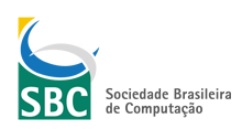Failure Prediction based on Monitoring Sequences of Actions and Action Duration
Resumo
An agent can attempt to achieve multiple goals and each goal can be achieved by applying various different plans. Anticipating failures in agent plan execution is important to enable an agent to develop strategies to avoid or circumvent such failures, allowing the agent to achieve its goal. Plan recognition can be used to infer which plans are being executed from observations of sequences of activities being performed by an agent. Symbolic Plan Recognition is an algorithm that represents knowledge about the agents under observation in the form of a plan library. In this paper, we use this symbolic algorithm to find out which plan the agent is performing and we develop a failure prediction system, based on information available in the plan library and in a simplified calendar which manages the goals the agent has to achieve. This failure predictor is able to monitor the sequence of agent actions and detects if an action is taking too long or does not match the plan that the agent was expected to be performing.Referências
Armentano, M. G. and Amandi, A. (2007). Plan recognition for interface agents. Artificial Intelligence, 28(2):131–162.
Avrahami-Zilberbrand, D. and Kaminka, G. A. (2005). Fast and complete symbolic plan recognition. In Kaelbling, L. P. and Saffiotti, A., editors, Proceedings of the International Joint Conference on Artificial Intelligence, pages 653–658. Professional Book Center.
Carberry, S. (2001). Techniques for plan recognition. User Modeling and User-Adapted Interaction, 11(1-2):31–48.
Fox, M. and Long, D. (2003). PDDL2.1: An Extension to PDDL for Expressing Temporal Planning Domains. Journal of Artificial Intelligence Research, 20(1):61–124.
Geib, C. W. (2002). Problems with intent recognition for elder care. In Proceedings of the AAAI-02 Workshop Automation as Caregiver, pages 13–17.
Geib, C. W. and Goldman, R. P. (2003). Recognizing plan/goal abandonment. In Proceedings of the 18th International Joint Conference on Artificial Intelligence, IJCAI’03, pages 1515–1517, San Francisco, CA, USA. Morgan Kaufmann Publishers Inc.
Goldman, R. P., Geib, C. W., and Miller, C. A. (1999). A new model of plan recognition. Artificial Intelligence, 64:53–79.
Hong, J. (2001). Goal recognition through goal graph analysis. Journal of Artificial Intelligence Research, 15:1–30.
Kautz, H. A. and Allen, J. F. (1986). Generalized plan recognition. In Kehler, T., editor, Proceedings of the Conference of the American Association of Artificial Intelligence (AAAI-86), pages 32–37. Morgan Kaufmann.
Masato, D. (2012). Incremental Activity and Plan Recognition for Human Teams. PhD thesis, University of Aberdeen.
Mausam and Weld, D. S. (2008). Planning with durative actions in stochastic domains. Journal of Artificial Intelligence Research, 31(1):33–82.
Panisson, A. R., Freitas, A., Schmidt, D., Hilgert, L., Meneguzzi, F., Vieira, R., and Bordini, R. H. (2015). Arguing About Task Reallocation Using Ontological Information in Multi-Agent Systems. In 12th International Workshop on Argumentation in Multiagent Systems.
Pynadath, D. V. and Wellman, M. P. (1995). Accounting for context in plan recognition, with application to traffic monitoring. In Proceedings of the Eleventh Conference on Uncertainty in Artificial Intelligence, UAI’95, pages 472–481, San Francisco, CA, USA. Morgan Kaufmann Publishers Inc.
Sukthankar, G., Goldman, R. P., Geib, C., Pynadath, D. V., and Bui, H. H., editors (2014). Plan, Activity, and Intent Recognition: Theory and Practice. Elsevier.
Avrahami-Zilberbrand, D. and Kaminka, G. A. (2005). Fast and complete symbolic plan recognition. In Kaelbling, L. P. and Saffiotti, A., editors, Proceedings of the International Joint Conference on Artificial Intelligence, pages 653–658. Professional Book Center.
Carberry, S. (2001). Techniques for plan recognition. User Modeling and User-Adapted Interaction, 11(1-2):31–48.
Fox, M. and Long, D. (2003). PDDL2.1: An Extension to PDDL for Expressing Temporal Planning Domains. Journal of Artificial Intelligence Research, 20(1):61–124.
Geib, C. W. (2002). Problems with intent recognition for elder care. In Proceedings of the AAAI-02 Workshop Automation as Caregiver, pages 13–17.
Geib, C. W. and Goldman, R. P. (2003). Recognizing plan/goal abandonment. In Proceedings of the 18th International Joint Conference on Artificial Intelligence, IJCAI’03, pages 1515–1517, San Francisco, CA, USA. Morgan Kaufmann Publishers Inc.
Goldman, R. P., Geib, C. W., and Miller, C. A. (1999). A new model of plan recognition. Artificial Intelligence, 64:53–79.
Hong, J. (2001). Goal recognition through goal graph analysis. Journal of Artificial Intelligence Research, 15:1–30.
Kautz, H. A. and Allen, J. F. (1986). Generalized plan recognition. In Kehler, T., editor, Proceedings of the Conference of the American Association of Artificial Intelligence (AAAI-86), pages 32–37. Morgan Kaufmann.
Masato, D. (2012). Incremental Activity and Plan Recognition for Human Teams. PhD thesis, University of Aberdeen.
Mausam and Weld, D. S. (2008). Planning with durative actions in stochastic domains. Journal of Artificial Intelligence Research, 31(1):33–82.
Panisson, A. R., Freitas, A., Schmidt, D., Hilgert, L., Meneguzzi, F., Vieira, R., and Bordini, R. H. (2015). Arguing About Task Reallocation Using Ontological Information in Multi-Agent Systems. In 12th International Workshop on Argumentation in Multiagent Systems.
Pynadath, D. V. and Wellman, M. P. (1995). Accounting for context in plan recognition, with application to traffic monitoring. In Proceedings of the Eleventh Conference on Uncertainty in Artificial Intelligence, UAI’95, pages 472–481, San Francisco, CA, USA. Morgan Kaufmann Publishers Inc.
Sukthankar, G., Goldman, R. P., Geib, C., Pynadath, D. V., and Bui, H. H., editors (2014). Plan, Activity, and Intent Recognition: Theory and Practice. Elsevier.
Publicado
23/05/2016
Como Citar
FARIAS, Giovani; PEREIRA, Ramon Fraga; HILGERT, Lucas; MENEGUZZI, Felipe; VIEIRA, Renata; BORDINI, Rafael H..
Failure Prediction based on Monitoring Sequences of Actions and Action Duration. In: WORKSHOP-ESCOLA DE SISTEMAS DE AGENTES, SEUS AMBIENTES E APLICAÇÕES (WESAAC), 10. , 2016, Maceió/AL.
Anais [...].
Porto Alegre: Sociedade Brasileira de Computação,
2016
.
p. 70-81.
ISSN 2326-5434.
DOI: https://doi.org/10.5753/wesaac.2016.33207.



